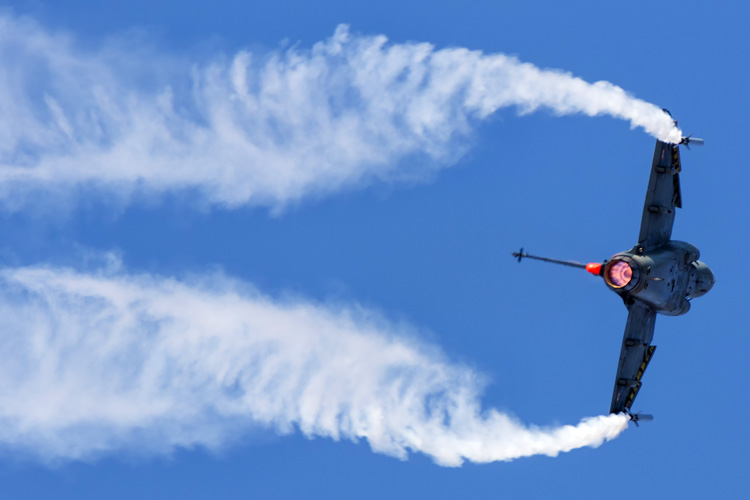INDIAN ARMED FORCES CHIEFS ON OUR RELENTLESS AND FOCUSED PUBLISHING EFFORTS

The insightful articles, inspiring narrations and analytical perspectives presented by the Editorial Team, establish an alluring connect with the reader. My compliments and best wishes to SP Guide Publications.

"Over the past 60 years, the growth of SP Guide Publications has mirrored the rising stature of Indian Navy. Its well-researched and informative magazines on Defence and Aerospace sector have served to shape an educated opinion of our military personnel, policy makers and the public alike. I wish SP's Publication team continued success, fair winds and following seas in all future endeavour!"

Since, its inception in 1964, SP Guide Publications has consistently demonstrated commitment to high-quality journalism in the aerospace and defence sectors, earning a well-deserved reputation as Asia's largest media house in this domain. I wish SP Guide Publications continued success in its pursuit of excellence.
Tejas Mk1A for IAF
 |
By Lt. General P.C. Katoch (Retd) Former Director General of Information Systems, Indian Army |

Ahead of the Air Force Day on October 8, 2019, Air Chief Marshal R.K.S. Bhadauria in his annual address had stated that the IAF would be looking to indigenous platforms like the Tejas and the Advanced Medium Combat Aircraft (AMCA) to meet the requirements of its squadron numbers as well as modernise its inventory with fourth generation plus and fifth generation aircraft. On March 18, 2020, the Defence Acquisition Council (DAC), chaired by Defence Minister Rajnath Singh gave the green light for procurement of 83 Tejas Mk1A Light Combat Aircraft (LCA) from Hindustan Aeronautics Limited (HAL), Bengaluru, by finalising contractual and other issues related to the biggest deal for the indigenous combat aviation industry. The proposal will now be put up to the Cabinet Committee on Security (CCS) for final approval. The Ministry of Defence (MoD) issued a statement that said, “The Light Combat Aircraft Tejas indigenously-designed by Aircraft Development Agency (ADA) under the Defence Research and Development Organisation (DRDO) and manufactured by Hindustan Aeronautics Limited (HAL) is going to be the backbone of Indian Air Force in future."
The DAC had earlier approved the procurement of 83 Tejas jets in November 2016, and one year later, the Indian Air Force had also issued a single-vendor tender to HAL in December 2017. But the DAC approval of March 18 this year has paved the way for the more advanced Mk1A version of the aircraft. Naturally, this will be a terrific boost for the 'Make in India' initiative as the LCA is indigenously designed, developed and manufactured with participation of several local vendors apart from HAL. In coming years, the Tejas is expected to form the back bone of the IAF's fleet. HAL is expected to deliver the first LCA Mk-1A to the IAF three years after the deal is signed. Production will start by 2023 and a full squadron delivered by 2025 if a contract is signed soon. The delivery of 83 aircraft is expected to be complete by 2029. The order for these 83 Tejas Mk1A is essential for maintaining the strength of fighter squadrons in the IAF which is down to 30 against the authorised 42 squadrons. Even if these Tejas Mk1A supplies happen on time, IAF will be left with a low of 26 squadrons by 2021, rising to 30 by 2027. The IAF last had 42 fighter squadrons in 2002. The latest DAC approval does not mention the price though media reports have mentioned 93,000 crore as the cost of 83 Tejas Mk1A. The issue had been pending for over two years because of cost negotiations, with HAL who had initially asked for around 50,000 crore for the 83 indigenous fighters. IAF had objected to the high price cited by HAL, arguing that it was asking for 463 crore for each Tejas Mk1A whereas it supplies the more modern Russian Sukhoi fighter jet at 415 crore per aircraft. The price was also around 100 crore more than the earlier version of Tejas Mk 1, leading to prolonged negotiations between IAF and HAL. The current DAC approval is also critical for HAL as its current orders would run out by 2021-22 resulting in halting production.
With the induction of 83 aircraft, IAF will have a total of 123 Tejas fighter jets, making up six of its squadrons. The indigenous Tejas Mark II will have the capacity to conduct operations such as the one the IAF undertook in Balakot, with beyond-visual-range missiles with a greater reach and virtually jam-proof AESA radars in order to be suitable replacements for the Indian Air Force (IAF)'s aging Mirage 2000 fighters, according to the agency overseeing the development the aircraft. The Mark II, will be fitted with heavier GE F414 engine. It will have double the range of its predecessor and fitted with Astra II BVR air-to-air missiles with a range of at least 150 km. According to HAL, “While Tejas MK I is for combat air patrol within the Indian Territory, MK II will have the capacity to conduct Balakot-like surgical strikes in enemy territory as it will carry heavy standoff weapons like Crystal Maze and Spice missiles.” While work on MK II is proceeding apace, ADA, in consultation with IAF will also freeze the design of its twin-engine Advanced Medium Combat Aircraft (AMCA) in the next three months. IAF, last November gave a written commitment to DRDO that it would buy the fifth-generation AMCA to strengthen its strike capabilities. AMCA is expected to roll out in 2024 and take to the skies the following year. The Tejas MK II is a 4.5 generation aircraft.





